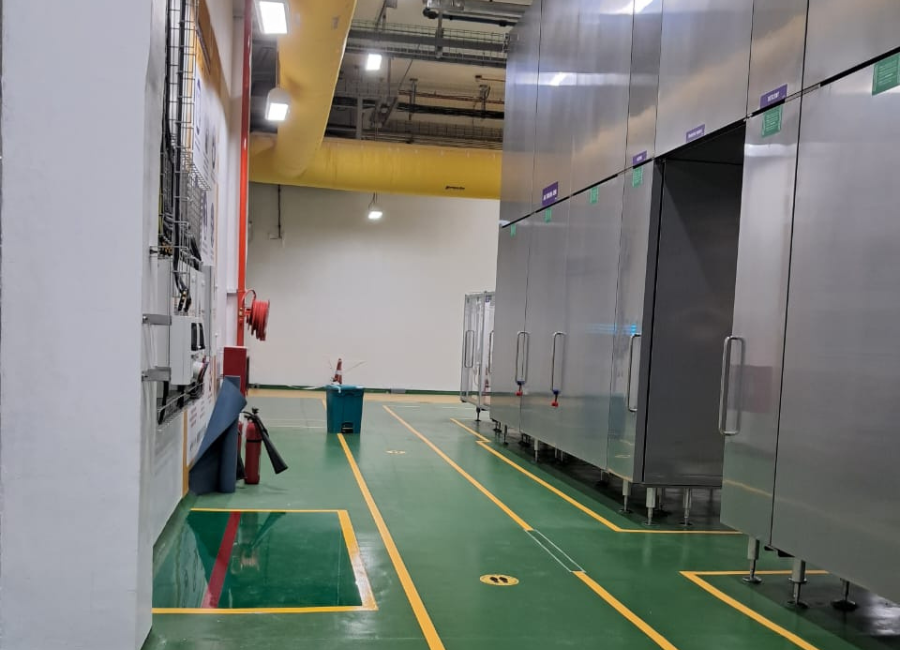Crucial Role of ESD Flooring in Industrial Settings
In the fast-paced world of industrial operations, where cutting-edge technology and sensitive electronic equipment are ubiquitous, the need for Electrostatic Discharge (ESD) control measures cannot be overstated. Among these measures, one element stands out as a fundamental component of a comprehensive ESD protection plan: ESD flooring. In this blog post, we will delve into the importance of ESD flooring in industrial settings and its role in safeguarding critical electronic components and ensuring a safe working environment.

Understanding Electrostatic Discharge (ESD)
Electrostatic discharge, the sudden flow of electricity between two electrically charged objects, is a common phenomenon that can have detrimental effects on sensitive electronic devices. In an industrial context, where electronic components are omnipresent, the risks associated with ESD are significantly heightened. Even a minor discharge can cause irreparable damage to electronic components, leading to costly downtime and compromised product quality.
The Role of ESD Flooring
ESD flooring serves as a crucial line of defense against electrostatic discharge by providing a controlled path for electrical charges to dissipate harmlessly. Unlike traditional flooring materials, ESD flooring is specifically designed to have a low electrical resistance, ensuring a rapid and controlled discharge of static electricity. This is particularly important in environments where sensitive electronic equipment, such as manufacturing facilities, laboratories, and cleanrooms, is prevalent.
Benefits of ESD Flooring
- Protection of Electronic Components: The primary purpose of ESD flooring is to protect electronic components from damage caused by electrostatic discharge. By providing a pathway for static electricity to safely dissipate, ESD flooring prevents the buildup of electrical charges that could otherwise harm sensitive equipment.
- Employee Safety: Beyond safeguarding electronic devices, ESD flooring contributes to the overall safety of personnel working in industrial environments. It minimizes the risk of static shocks to employees, reducing the potential for accidents and injuries.
- Compliance with Industry Standards: Many industries, especially those involving the production of electronic components, adhere to stringent ESD control standards. ESD flooring helps companies meet and exceed these standards, ensuring regulatory compliance and maintaining product quality.
- Preservation of Product Quality: In industries where product quality is paramount, the integrity of electronic components must be maintained throughout the manufacturing process. ESD flooring plays a pivotal role in preserving the quality and reliability of products by preventing ESD-related defects.
Types of ESD Flooring
- Conductive Flooring: Designed to facilitate the rapid dissipation of static electricity, conductive flooring is an excellent choice for environments where stringent ESD control is necessary.
- Static Dissipative Flooring: Providing a balance between conductivity and resistance, static dissipative flooring prevents the rapid discharge of static electricity, offering protection for both personnel and electronic equipment.
Conclusion
In the ever-evolving landscape of industrial technology, the importance of ESD control measures, especially ESD flooring, cannot be overstressed. The investment in high-quality ESD flooring not only protects sensitive electronic components but also contributes to a safer working environment for employees. As industries continue to advance, prioritizing ESD protection becomes a critical aspect of ensuring the longevity and reliability of electronic systems. ESD flooring stands as a frontline defense, bridging the gap between technological innovation and the preservation of electronic assets.
